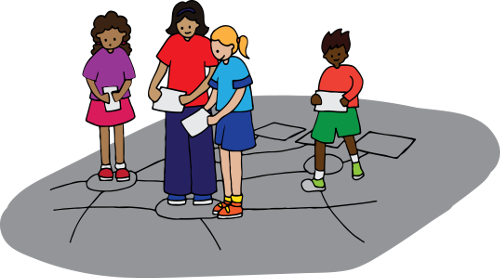我应如何进行 CS Unplugged 教学?
CS Unplugged 在很大程度上以建构主义方法为基础:根据几个简单规则,给学生设置挑战。在解决这些挑战的过程中,他们将自行发现强有力的想法。这不仅是比较难忘的学习方法,还能让学生感觉到可自主掌握这些想法。此外,活动也非常具有动觉 - 材料越大越好。

因为在此方法下,您也可跟着学生一起学习。您将需要通读整个活动的资料,以便做好准备。我们的许多活动配有视频,可同时供您观看。但是,当学生发现如何得出这些想法时,您将开始看到学生发现的模式和想法,因为他们理解计算机科学这些主题背后的原则。
If you're working within a school curriculum, you can find appropriate activities based on the learning objectives and age group. In several countries there are guides linking CS Unplugged to the local curriculum (e.g. Digital Technologies Hub for Australia). But the unit plans listed follow the common topics that are appearing in school curricula, so you are likely to find something relevant from the titles.
Note that CS Unplugged does not teach programming, but it does provide ways to support students with programming. There are activities such as Kidbots that provide an excellent lead into the ideas they will encounter when programming (such as sequence and debugging). There are also "Plugging it in" challenges that give some programming exercises to follow up from an Unplugged activity. These don’t teach students how to program, but will give students a chance to exercise their programming skills in a context relevant to an Unplugged activity that they have just experienced. There’s more information about using these here.
然而,阅读 Unplugged 并非了解其的有趣方式 - 为学生选出一个课程,一起深入研究!


